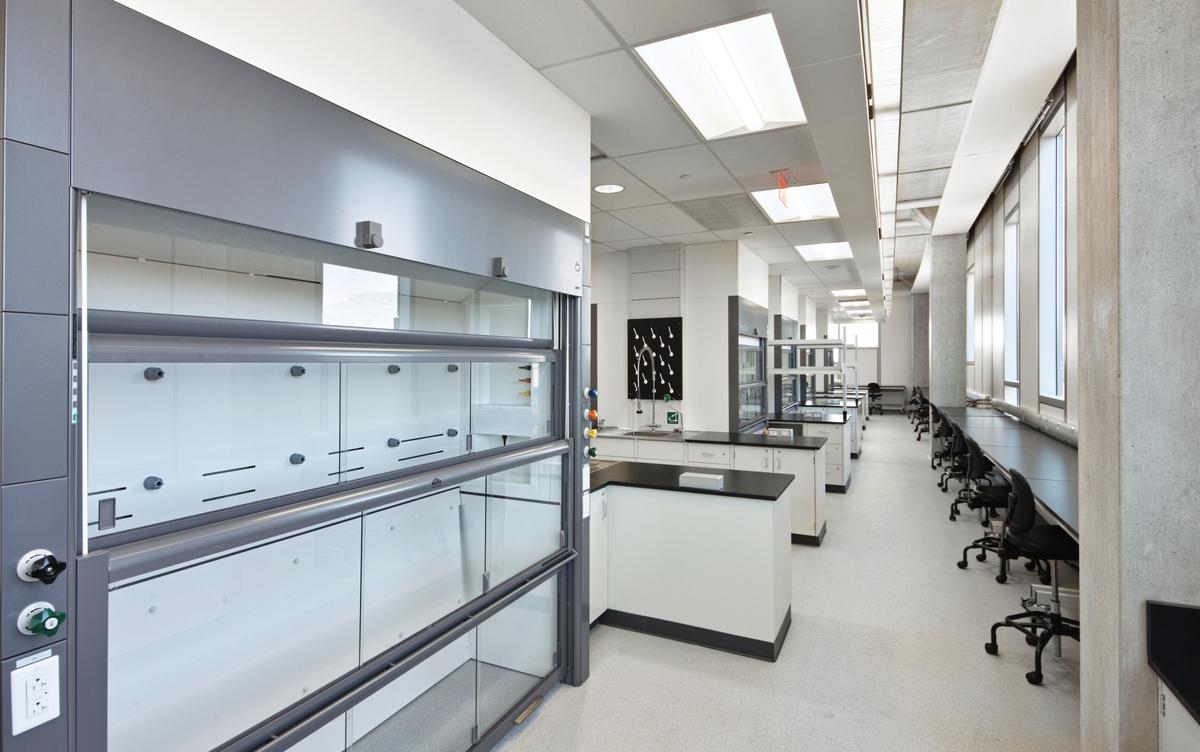Creating a new science lab, and knowing how best to design these spaces and take full advantage of the technology now on offer can seem like a challenge. Fortunately, there are some basic principles you can follow that should help ensure you achieve impressive results. With this in mind, here are four tips when designing this learning environment.
- Ensure flexibility to cope with changing curriculum demands
Since the 1960s Half Our Future report, the ratio of theory to practical lessons has changed in science lessons and the curriculum now requires students to carry out more experiments. Whereas older science classrooms were often designed around the ‘talk and chalk’ model of learning, modern labs have to accommodate a greater level of practical work. Many lessons now include a mixture of activities, ranging from discussion and presentations to research and experiments. Combining this with the latest level of display technology (tablets and 4K screens) means labs have to be flexible.
One of the simplest ways to accommodate multiple forms of learning with minimal disruption during lessons is to incorporate dual-function benching into your lab. For example, a Hot Corners layout provided by Innova Design Solutions, laboratory furniture specialists, addresses the need to provide both a theory classroom and practical laboratory within the same space. Hot Corners is designed so students all face the front and no one has their back to the teacher. Having the teacher on the long wall shortens communication lines and enables greater collaboration. An added advantage of these benches is the fact that services such as electrical sockets and gas taps are located off work surfaces on the front face of the units, creating more space for theory and practical work.
These dual-function units allow students to transition seamlessly between theory and practical tasks and mean they don’t have to waste time relocating to different benches.
- Incorporate an interactive whiteboard as a focal point
Teachers no longer have to rely on basic whiteboards and projectors to display information to students. Instead, they can bring their labs to life and create a compelling focal point by using interactive whiteboards. Also called smartboards, these sophisticated systems enable teachers to showcase everything from text, data and illustrations to photos and videos – all at the click of a button or touch of a screen. The easy-to-use displays can also be connected to tools like cameras and microscopes, meaning that students can see practical demonstrations up close on a big screen.
Including a high-tech focal point like this in your lab is a simple but effective way to make lessons more dynamic and engaging. For the best results, consider incorporating your smartboard into an attractive teacher wall complete with built-in storage, providing space to store books and equipment as well as creating a focal point in your lab. With multiple storage options available, teacher walls de-clutter the front of your classroom, which improves student concentration and makes it easier to engage with students
- Provide good lines of sight and space to circulate
Good lines of sight and easy movement are a must in all learning environments, and this is something to focus on when you’re planning your science lab. Traditionally, many classrooms have multiple rows of desks stretching back from the teacher, creating a long, narrow setup. This makes it difficult for teachers and students to see and hear each other clearly, and to circulate around the spaces. In turn, this could have a negative effect on learning and behaviour.
By rotating a traditional setup 90 degrees so that the focus of the room and the place where the teacher stands is the long wall, rather than the short wall, you can overcome these problems. This approach means teachers and pupils can move around the space with ease and students are closer to the front and feel more engaged. Well-designed benching complements these arrangements by ensuring that all pupils face the teacher during theory lessons.
- Use tough materials that will stand the test of time
To ensure your new lab stays in good condition for as long as possible, select high-quality, durable materials that can stand up to the rigours of daily use. You’ll need materials that are chemical and heat resistant, as well as being non-porous. Good examples include Velstone, Trespa and Corian. Selecting the right worktops for your lab will make cleaning and maintenance much easier.
Getting the design of a modern science lab spot on isn’t easy and it does require some careful planning. The results will make your efforts worthwhile though. A practical, attractive and high-tech lab can transform the experiences of teachers and pupils, dramatically improving learning outcomes in the process.

